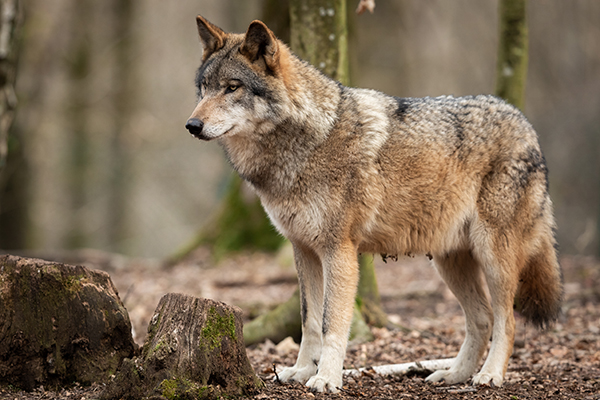After more than a century of absence, wolves have recently come back to the Netherlands. Since 2019, they started to settle in the country again and now their population is slowly but steadily increasing. However, along with their healthier numbers comes fear based on more frequent sightings, interactions with humans and attacks on livestock. A debate about the fate of the Dutch wolves has started, with different valid positions, promising to get more heated in the future. As discussion is based on a mixture of facts, opinions and emotions, there is a growing challenge for the government, institutions doing research and implementing policy, and society as a whole, to listen to all interested parties and design future plans for responsible cohabitation.
The European wolf was not seen in Dutch territory for 150 years. After populations started to resettle and grow in neighbouring countries during the 1990s and 2000s, possibilities for wolves coming back to the Netherlands finally went from speculation to reality in the past decade. The International Wolf Centre quotes a paper published in 2012 that explored the prospects of wolves returning to the country and theorized that, although the territory is densely populated, wolves would ‘still be able to find areas with low human disturbance and prey’. Shortly after, in 2015, the first wandering wolf was reported roaming through the provinces of Drenthe and Groningen. And in 2019, according to Wolven in Nederland, wolves settled again, and the first local pups were born in the Veluwe region.
A recent report from BIJ12, the institution responsible for monitoring and implementing wolf policy on behalf of the provinces, confirmed the presence of at least 18 wolves in the country, and said that during August to October of 2022, there were 101 confirmed wolf attacks on livestock, a number that rose rapidly. The data, gathered through CCTV footage, wolf excrement, paw prints and DNA research, suggests that the higher number of attacks may correspond to the arrival of new pups (the parents living in North Veluwe were involved in four attacks on sheep) and newly arrived wolves wandering in from other countries – who could either settle or pass through.
Wolves are a protected species, which means they cannot be harmed, killed or captured under normal circumstances. After the increase of attacks on livestock and recent sightings close to humans, a debate has sparked both at a governmental and institutional level, and for society at large, being especially heated on social media. On the one hand, there is a cause for celebration due to the successful return of a native species, a win for Dutch biodiversity and the natural environment. On the other hand, there is a sense of fear for livestock, pets and humans, and the feeling that there is just not enough room for people and wolves to cohabit safely. By the end of last year, minister for Nature and Nitrogen Policy Christianne Van der Wal pointed out the conflicting interests in the debate and called for a broad, social dialogue, including all parties involved. She also warned that ‘the discussion is now based on fear and that is not helpful,’ NOS reported.
BIJ12 states that experience in other countries such as Germany and France shows that proper fences and guardian dogs for livestock are effective measures for disincentivizing wolf attacks, and highlights the work of Dutch provinces in financing such methods, as well as compensating owners for damage to their animals. They also recently incorporated a digital system for reporting wolf damage in order to increase the efficiency of institutional reaction to incidents. There is a need for other measures that include the general population, such as discouraging human interactions with wolves – who are sometimes lured with food in order to be photographed. Wolves are naturally shy, and these events make them more prone to come close to humans. As information and education are key to ensure fear management and encourage responsible behaviour, in 2023 the government plans to start a social dialogue about how humans and wolves can live together.
Wolven in Nederland highlights how extraordinary it is that wolves were hunted to near extinction and now have finally returned to the areas they once inhabited: ‘Wolves can live with us; perhaps we are the ones that need to learn to live with them again,’ they conclude.
Written by Juan Álvarez Umbarila
